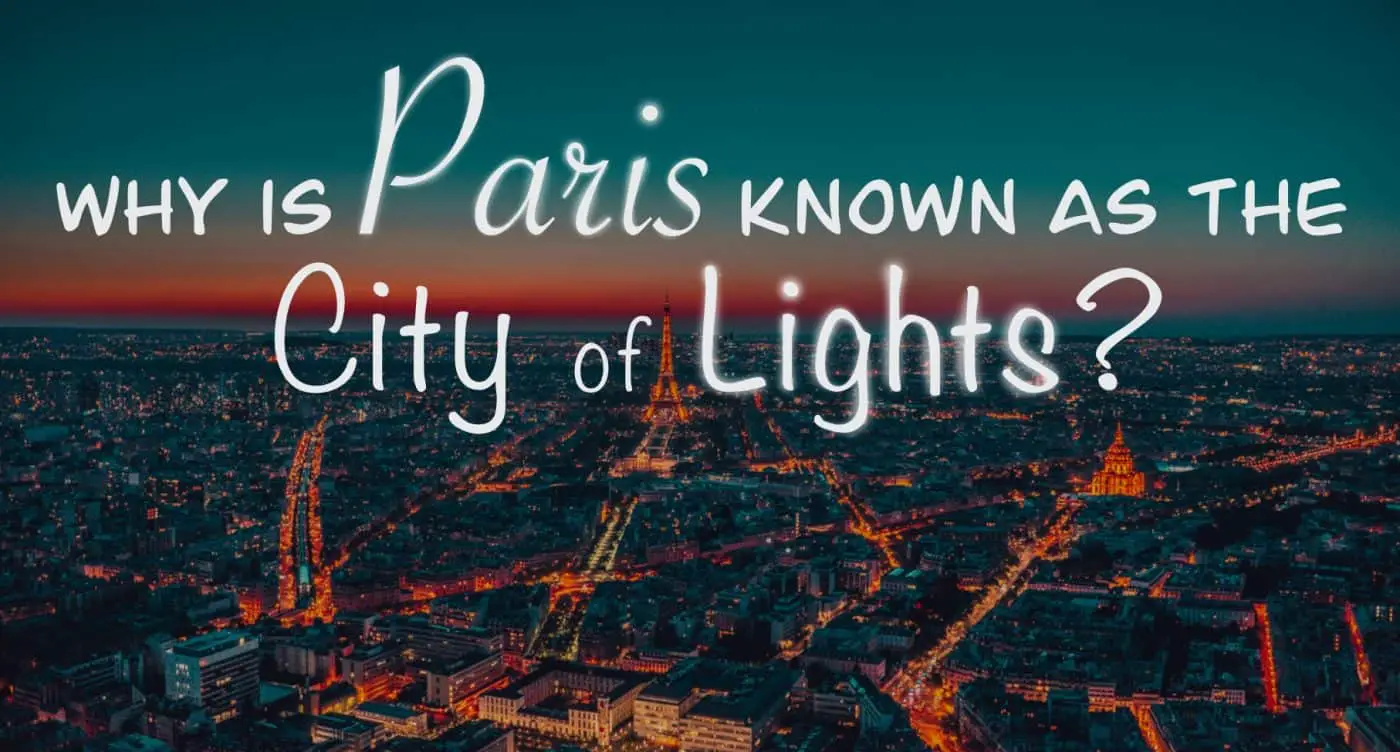French Culture
Why is Paris Called the City of Lights?
Lutece, Paname, Pentruche, City of lights, City of love— Yes! You guessed it right. These are all nicknames for the capital of France, Paris. The city is known for its unparalleled architectural appeal, laced with art museums that you won’t find anywhere else, and the fashion hub that houses some of the top-notch boutiques in the world.
Travelers believe that if you’re going to Paris, extend your vacation for at least a week to fully explore the beauty of this wonderful city. The city with all other striking differences from other parts of the world, is the house of the iconic Eiffel Tower, which remains one of the most sought after tourist attractions.
An interesting debate that Parisians would take up any day is whether the nickname is the ‘City of Light’ or the ‘City of Lights’. There’s no consensus over what it actually is, so we will stick to ‘City of Lights’ and “shed some light” over why Paris was given this name.
A Little Flashback
There are three accounts that justify the nickname. The first one dates back to the era of King Louis XIV when he imposed law and order reforms in the city.
The second myth or account says that Paris was given the nickname due to the ‘Age of enlightenment’ that resulted in philosophical advancements, and political reforms during the 17th century in Europe.
The last account for Paris having the nickname ‘City of lights’ is the use of gas lights in the city around the 19th century.
King Louis XIV and La Rynie
In the era of King Louis XIV, law and order was going down the drain. There were two back-to-back killings of police officials that made King Louis XIV embarrassed of the situation in Paris.
He then imposed reforms that led to a position of Lieutenant General of Police. A lawyer from Limoges, La Rynie got the chance to work at this designation.
La Rynie was a well-settled man even before he started working in this position. He then introduced reforms in the city that included the cleaning of the streets by the locals themselves, and the imposition of a ‘mud tax’.
After he started getting hold of the unruly city, La Rynie made it mandatory for the residents of the city to keep their houses and shops lit after sunset.
The city was a haven for burglars and murderers at the time, so La Rynie made sure that the criminals didn’t have a way to escape.
That lighting back then paved the road for today’s Paris that is the ‘City of Lights’.
The Age of Enlightenment
The age of enlightenment is believed to be one of the reasons that Paris got its nickname. According to some Parisians, the term ‘The City of Light’ is not the true representation of the French expression ‘la ville lumière’ because they believe that lumière depicts the process of enlightenment rather than only ‘light’.
The age of enlightenment was spread between the years 1715-1789 under the reign of King Louis XV. This period is characterized by political and social reforms in France, where feudality was almost completely eradicated, and philosophical ideas started penetrating the society that rejected monarchy.
This period gave fame to some of the finest world philosophers such as Montesquieu, Voltaire, Rousseau and Diderot.
The era is known as ‘Age of enlightenment’ due to the intellectual evolution that France experienced.
Use of Gas Lights in Paris
Paris, being the centre of philosophy and politics, became the first city to adopt gas light lamps that were invented in the 19th century. This gas light used a source of fuel that was created from distilled coal, and received the name ‘town gas’ or ‘manufactured gas’.
There’s a conflict however regarding the invention of this type of gas. The English believe that William Murdoch was the inventor of the manufactured gas, while the French argue that it was Phillip Lebon.
Whoever the inventor was, Paris adopted early the use of these gas lights, and now some people believe that Paris has got one of its nicknames due to this.
The Present Day
For people who have seen the Paris of today, it is the Eiffel Tower that makes the city worthy of the nickname. Every evening, 40 kms of garland all over the Eiffel Tower light up with 20,000 LED lights.
No matter what the kings, police or the inventors did, Paris stays well-lit enough to be called ‘The city of Lights’ today. Every evening, 296 official sites across Paris glisten with light, and 33 bridges keep dazzling visitors.
It’s not just the architecture either, 450 trees also keep shining each evening in Paris.
No matter the reason why Paris is called ‘City of Lights’ we believe that it’s a well-deserved title for the city of cafes, art museums and the Eiffel Tower that continues to attract tourists from all over the world.

